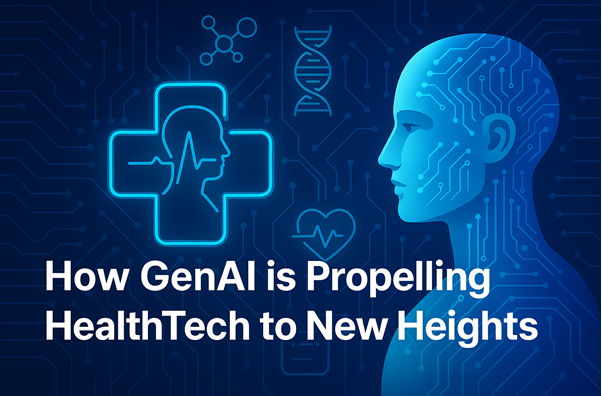
GenAI: Revolutionizing HealthTech and Taking It to the Next Level
In recent years, the marriage of Artificial Intelligence (AI) and healthcare has birthed groundbreaking innovations that are transforming the way we approach health and wellness. Among these, Generative AI (GenAI) stands out as a powerful tool that is pushing the boundaries of what’s possible in HealthTech. From personalized treatments to predictive healthcare, GenAI is playing an integral role in shaping the future of the medical industry.
1. Personalized Healthcare: The Age of Custom Treatments
Gone are the days of one-size-fits-all medical solutions. With GenAI, healthcare providers can analyze vast amounts of patient data — including genetic information, medical history, and lifestyle choices — to generate personalized treatment plans.
2. Drug Discovery: Accelerating Time-to-Market
The process of drug discovery traditionally takes years, with high costs and uncertain outcomes. However, GenAI accelerates this process by simulating complex biological processes and identifying potential compounds faster and more accurately than human researchers.
3. Medical Imaging: Enhancing Diagnostic Precision
Medical imaging plays a crucial role in diagnostics, but even the best radiologists can miss subtle patterns or abnormalities in images. GenAI enhances the capabilities of imaging technologies like MRI, CT scans, and X-rays by analyzing these images with a level of detail that surpasses human ability.
4. Virtual Health Assistants: The Future of Patient Interaction
GenAI is also transforming patient interaction by enabling the creation of intelligent virtual health assistants. These AI-driven chatbots or voice-activated systems can conduct patient interviews, provide mental health support, answer medical queries, and even guide patients through self-care routines.
5. Predictive Analytics: Transforming Preventative Care
One of the most promising applications of GenAI in healthcare is its ability to predict future health risks. By analyzing patient data in real-time, GenAI can detect patterns that indicate the likelihood of developing conditions like diabetes, cardiovascular diseases, or neurological disorders.
6. Telemedicine and Remote Monitoring: Extending Healthcare Reach
With the rise of telemedicine, GenAI is enhancing remote care by helping physicians monitor patients from afar. AI algorithms can analyze remote monitoring data, such as heart rate, blood pressure, or oxygen levels, to detect potential health issues in real-time.